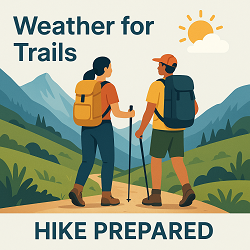Bellaire, KS Weather Forecast and Current Conditions
Current Conditions From Nearby Local Station Switch to Metric Units

Feels Like 60°F
at
Current Conditions From Nearby Local Station Switch to Metric Units

Feels Like 60°F
at
Point Forecast at a Glance







7-Day Temperature Trend
Week Ahead Summary
Variable high temperatures through the week, ranging from 58°F to 74°F. Some rain possible with at least 3 days showing precipitation chances of 20% or higher.
Climate Context
This week's forecast shows temperatures running 10°F above the historical average for November. Normal highs for this period are around 57°F with lows around 33°F.
This Date in Weather History
1955 - An early arctic outbreak set many November temperature records across Oregon and Washington. The severe cold damaged shrubs and fruit trees. Readings plunged to near zero in western Washington, and dipped to 19 degrees below zero in the eastern part of the state.
More on this and other weather history
Bellaire, KS 7 Day Weather Forecast Details
Tuesday Nov 11

Day: Sunny, with a high near 65. Northwest wind around 6 mph.

Night: Clear, with a low around 39. North northwest wind around 5 mph.
Wednesday Nov 12

Day: Sunny, with a high near 68. Southwest wind around 5 mph.

Night: Mostly clear, with a low around 44. South southeast wind around 6 mph.
Thursday Nov 13

Day: Mostly sunny, with a high near 69. South wind 6 to 9 mph.

Night: Mostly clear, with a low around 46.
Friday Nov 14

Day: Mostly sunny, with a high near 72.

Night: Partly cloudy, with a low around 57.
Saturday Nov 15

Day: Mostly sunny, with a high near 74.

Night: A slight chance of rain showers. Partly cloudy, with a low around 49. Chance of precipitation is 20%.
Sunday Nov 16

Day: A slight chance of rain showers before noon, then a slight chance of showers and thunderstorms. Mostly sunny, with a high near 65. Chance of precipitation is 20%.

Night: A slight chance of showers and thunderstorms before midnight, then a chance of showers and thunderstorms. Partly cloudy, with a low around 46. Chance of precipitation is 30%.
Monday Nov 17

Day: A chance of rain showers. Partly sunny, with a high near 58. Chance of precipitation is 40%.

Night: Partly cloudy, with a low around 39.
Sun & Moon Monthly
Sunrise 7:06 AM
Sunset 5:22 PM
Last Light 5:50 PM
Moonset 1:17 PM

Contiguous United States Extremes
Mon's High Temperature
100 at 2 Miles West Of Pala, CA
Tue's Low Temperature
10 at Mount Washington, NH and Snowshoe, WV
Weather Folklore
When geese cackle, it will rain.

Current subscribers - login to your ClearSky account
How We Provide Better Local Weather
Current conditions: We use the nearest available station to your location - including professional MESONET/MADIS and local weather stations - often miles closer than regional airports.
Forecasts: National Weather Service point forecasts predict for your specific area, not broad regional zones, making them far more relevant to your location.

